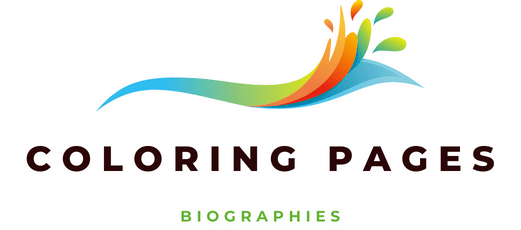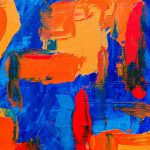The evolution of technology has been nothing short of revolutionary, especially in the world of archaeological surveys. One such advancement comes in the form of Light Detection and Ranging devices, more commonly referred to as Lidar. The Lidar technology has been a game-changer in surveying archaeological sites, aiding researchers in the identification, interpretation, and documentation of critical archaeological features. This article delves into the impact of Lidar technology on the precision of archaeological surveys in the UK, highlighting its role in data acquisition, feature interpretation, and vegetation penetration.
1. Lidar in Data Acquisition for Archaeological Surveys
Before the advent of Lidar technology, archaeological surveys relied heavily on traditional field methods for data acquisition. While these methods were fruitful, they were also time-consuming, labor-intensive, and often subjected to human error. With Lidar, however, these challenges have been significantly mitigated.
Also read : Can Haptic Feedback Gloves Enhance the Realism of Virtual Musical Instrument Training?
Lidar works by emitting pulsed laser light towards a target surface and then measuring the time it takes for the reflection to return. The data obtained from this process is used to create detailed three-dimensional representations of the ground, enabling archaeologists to visualize and examine the landscape with unprecedented precision.
The use of airborne Lidar systems has proven particularly beneficial. These systems, mounted on helicopters or drones, can survey vast areas in a short period, providing high-resolution data that is invaluable in preliminary site investigations. They can identify subtle changes in the ground surface that might signify underlying archaeological features, allowing archaeologists to narrow their field of study and focus on areas of potential interest.
This might interest you : How Is Machine Learning Enabling Smarter Grid Energy Management in Urban Areas?
2. Lidar and the Interpretation of Archaeological Features
Interpreting archaeological features from raw survey data has always been a challenge. Traditional methods require extensive, often subjective, interpretation by seasoned archaeologists. Lidar, on the other hand, provides an objective, consistent and quantifiable data set for feature interpretation.
With Lidar, the data generated paints a vivid picture of the landscape, highlighting natural and man-made features that can give clues about past civilizations. Archaeologists can now determine the values of various surface features, and use this knowledge to make informed decisions about the sites to excavate.
Moreover, the 3D data generated by Lidar allows for a multi-angled view of archaeological features. This means researchers can now examine these features from different perspectives, facilitating a more comprehensive and accurate interpretation.
3. Penetrating Vegetation with Lidar
One of the limiting factors in traditional archaeological surveys is the presence of dense vegetation. Trees and shrubs can effectively hide archaeological features, making them virtually impossible to spot on the ground or even through aerial photography.
Lidar technology has provided a solution to this problem. The laser pulses emitted by Lidar can penetrate the canopy and reach the ground surface, revealing hidden archaeological features. This feature is particularly useful in regions where vegetation growth is prolific, such as in the UK.
By highlighting these hidden features, Lidar allows for a comprehensive survey of the landscape regardless of the vegetation cover. It opens up previously inaccessible areas for archaeological study and aids in the discovery of new archaeological sites.
4. Lidar and Google Scholar
In addition to aiding in data acquisition and interpretation, Lidar has also facilitated scholarly communication in archaeology. Through platforms like Google Scholar, archaeological research using Lidar data is readily accessible to researchers worldwide.
Such platforms offer a wide array of scholarly articles detailing different aspects of Lidar use in archaeology. These range from case studies showcasing successful use of Lidar in archaeological surveys, to methodologies and techniques for optimizing Lidar data interpretation, to debates on the ethical considerations of using such technologies.
This vast array of information enables researchers to learn from one another’s experiences, refine their methodologies, and continually improve the accuracy and precision of their archaeological surveys.
5. The Future of Lidar in UK Archaeology
Looking ahead, it’s clear that Lidar technology will continue to play a pivotal role in UK archaeological surveys. While the technology has already proven invaluable in improving the precision and accuracy of these surveys, there is still plenty of potential for improvement.
Future developments in lidar technology could further enhance the resolution of the data obtained, allowing for the detection of even smaller archaeological features. Moreover, advancements in data processing algorithms could streamline the interpretation of Lidar data, making it easier for archaeologists to extract meaningful insights from their surveys.
In the meantime, Lidar continues to revolutionize the field of archaeology, providing researchers with the tools they need to make new discoveries about our past. Through Lidar, the secrets of the past are being brought to light with unprecedented clarity and precision.
6. Lidar Technology and the Identification of Burial Mounds in the UK
One of the most significant contributions of Lidar technology to UK archaeology is in the identification and cataloguing of burial mounds. Prior to the introduction of Lidar, the discovery and mapping of these archaeological features were largely reliant on aerial photography and ground surveys. However, both methods had their limitations. Aerial photography was affected by changing lighting conditions and seasonal changes, while ground surveys were limited by the terrain and vegetation cover.
The advent of Lidar, specifically airborne Lidar, has changed the game. The system’s ability to emit pulsed light and capture the return data has proven exceptionally effective in detecting subtle changes in the ground surface. Even in densely vegetated areas, Lidar allows archaeologists to accurately locate and map these burial mounds, facilitating a more comprehensive archaeological prospection.
In recent years, Lidar-derived data has led to the discovery of previously unknown burial mounds across the UK. Additionally, the high-resolution data obtained from Lidar surveys has enabled archaeologists to examine these features in unprecedented detail. This has led to a richer understanding of the spatial distribution and construction methods of these burial mounds, offering valuable insights into the ancient societies that built them.
7. The Role of Lidar in Remote Sensing
Remote sensing has long been a crucial component of archaeological research. Techniques such as aerial photography were standard; however, they often lacked the precision and detail required for accurate site mapping. Lidar technology, with its ability to penetrate the canopy and obtain high-resolution ground surface data, has greatly enhanced the efficacy of remote sensing in archaeology.
Especially in the UK, where vegetation is often dense, Lidar has been instrumental in revealing hidden archaeological features. The technology’s ability to measure canopy height has allowed for the mapping of the ground surface beneath the vegetation, revealing features that were previously obscured.
Moreover, Lidar’s contribution goes beyond mere detection. The three-dimensional data obtained allows for a more sophisticated analysis of the site’s topography. As a result, archaeologists can make more precise inferences about the site’s history and use. For example, the data can help determine whether a flat area was naturally occurring or artificially made.
8. Conclusion: The Lasting Impact of Lidar on UK Archaeology
In conclusion, Lidar technology has revolutionized archaeological surveys in the UK. It has transformed data acquisition, making it less labor-intensive and more precise. It has enabled a more objective interpretation of archaeological features. It has overcome the challenge of dense vegetation, revealing hidden gems beneath the canopy. It has also boosted remote sensing capabilities, leading to more accurate site mapping and analysis.
The growing body of research on Lidar technology, readily available on platforms like Google Scholar, also underscores its impact on the field. From Vienna, Austria, to the far reaches of the UK, the positive influence of Lidar derived data is undeniable.
While there is always room for improvement – in terms of both the technology itself and the interpretation of Lidar data – the current trajectory is promising. The future of UK archaeology is bright, thanks to the illuminating power of Lidar. As the technology continues to evolve and refine, so too will our understanding of the past. That is the lasting impact of Lidar on UK archaeology.











